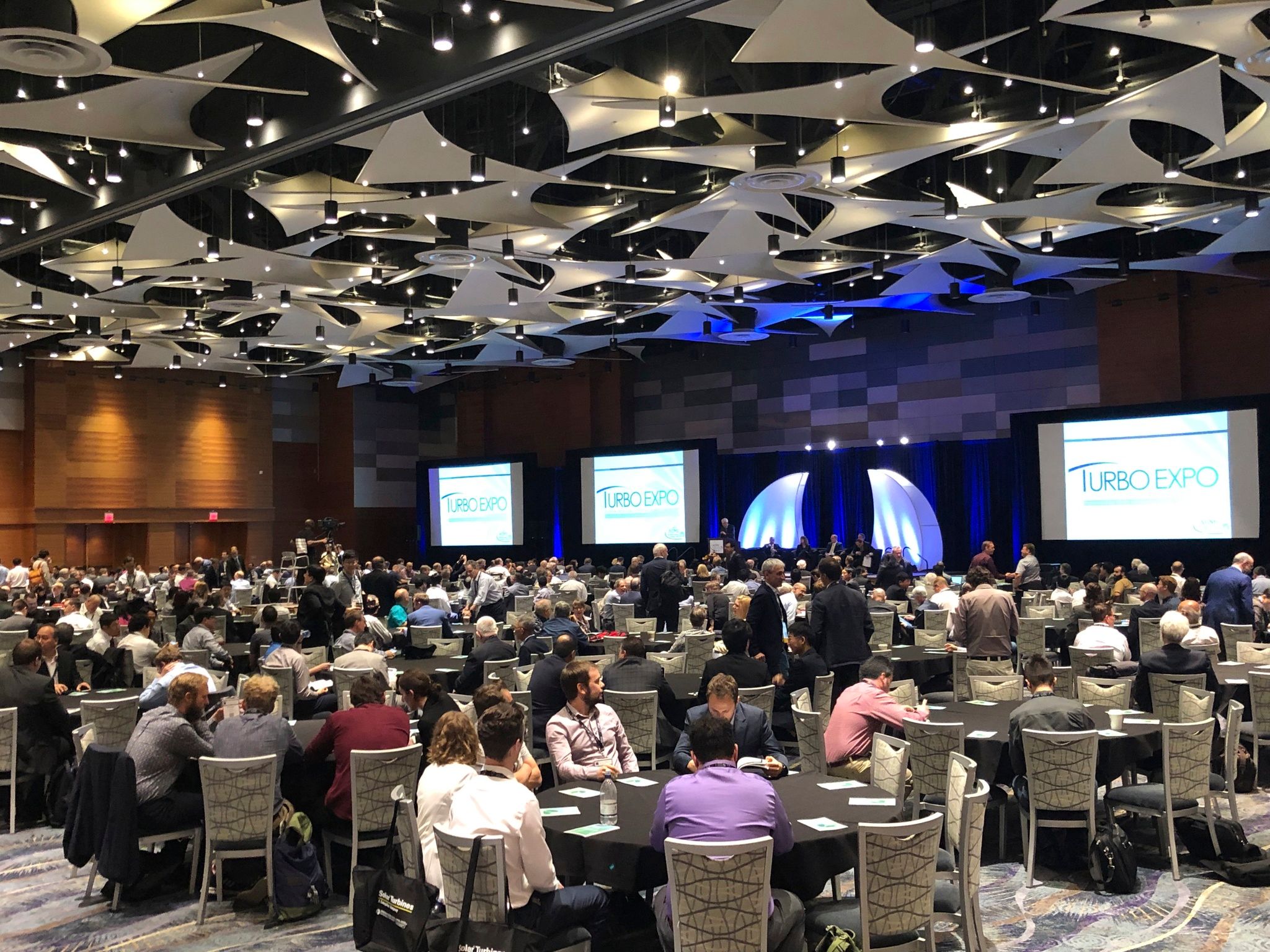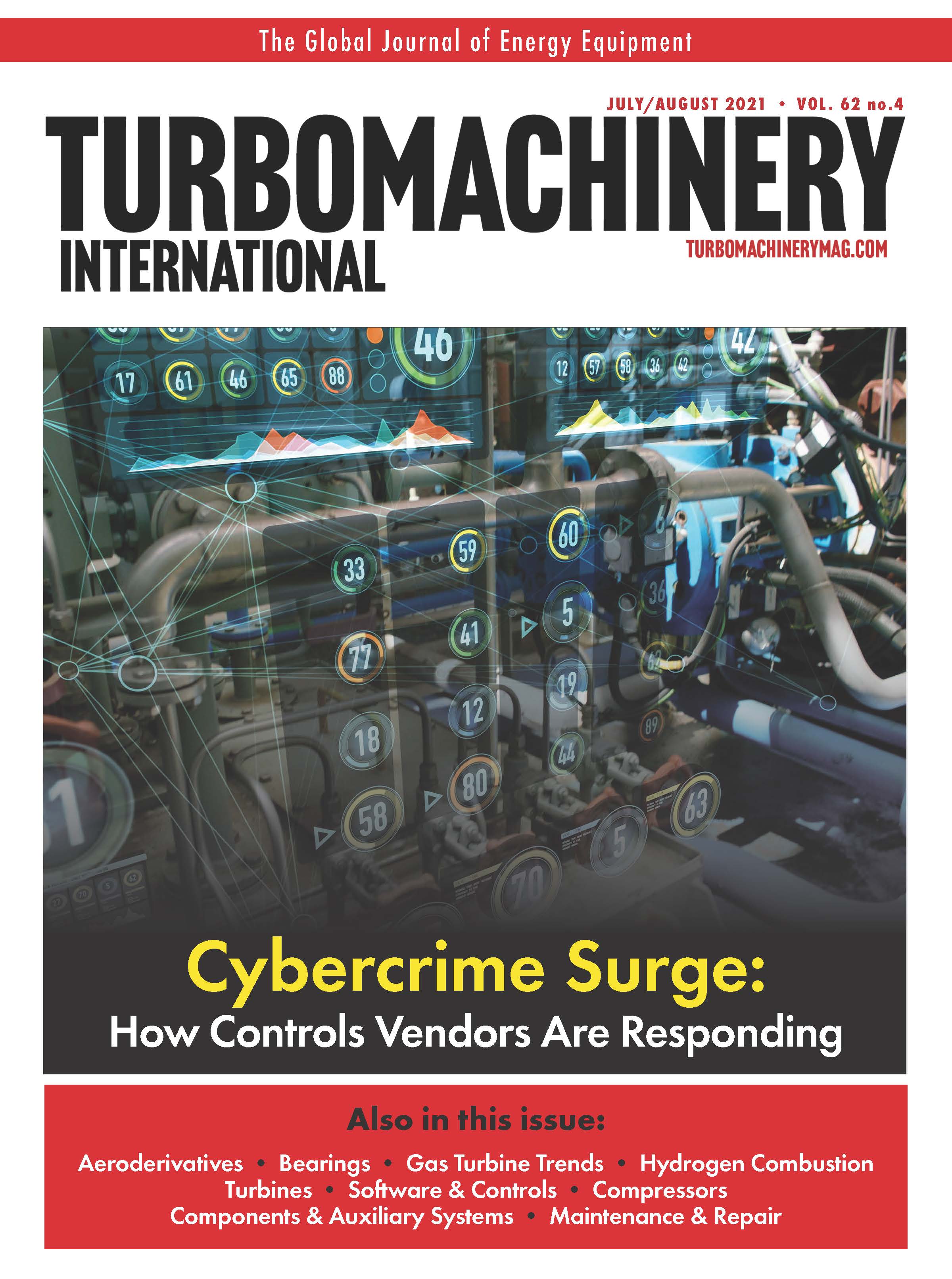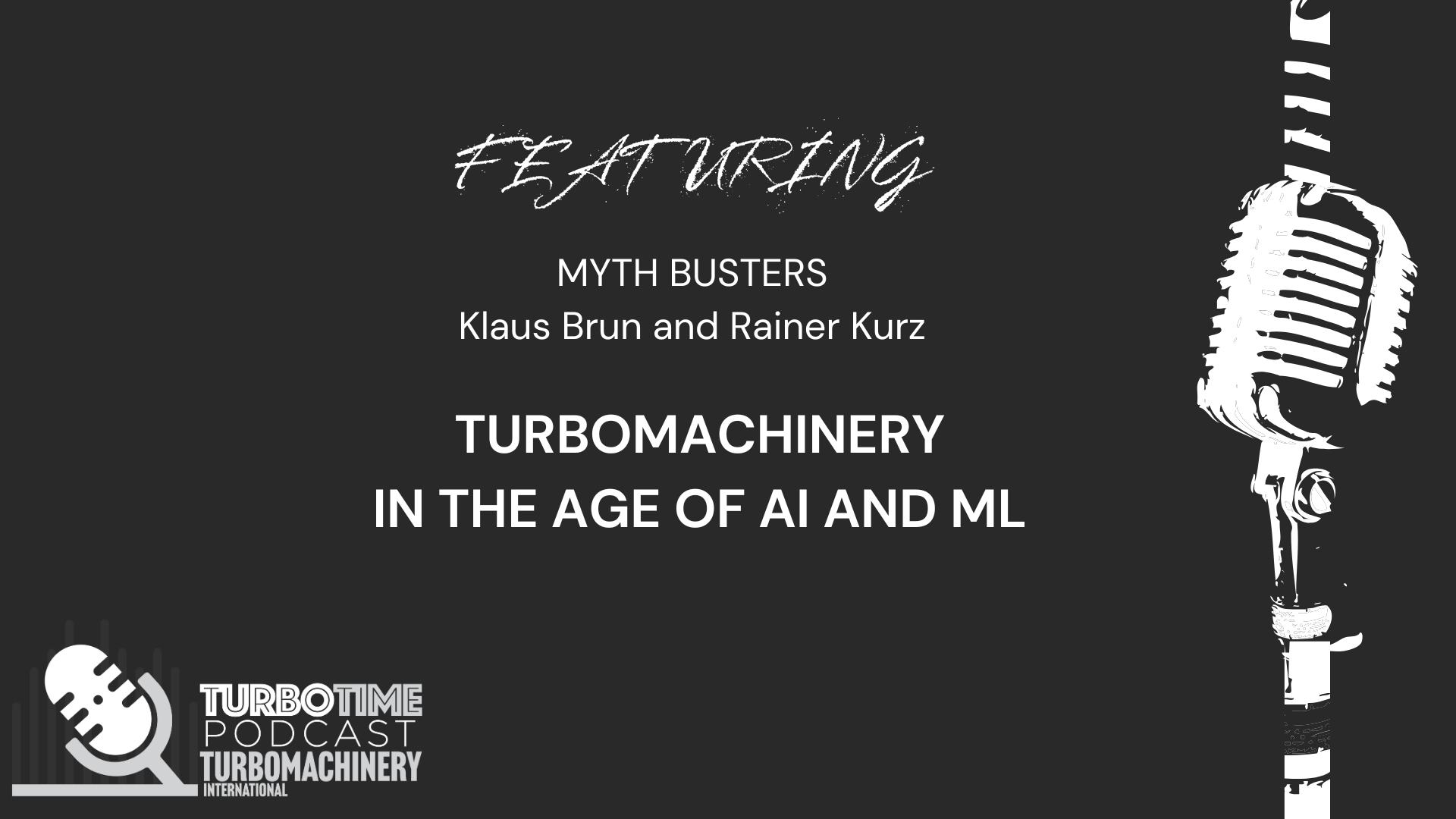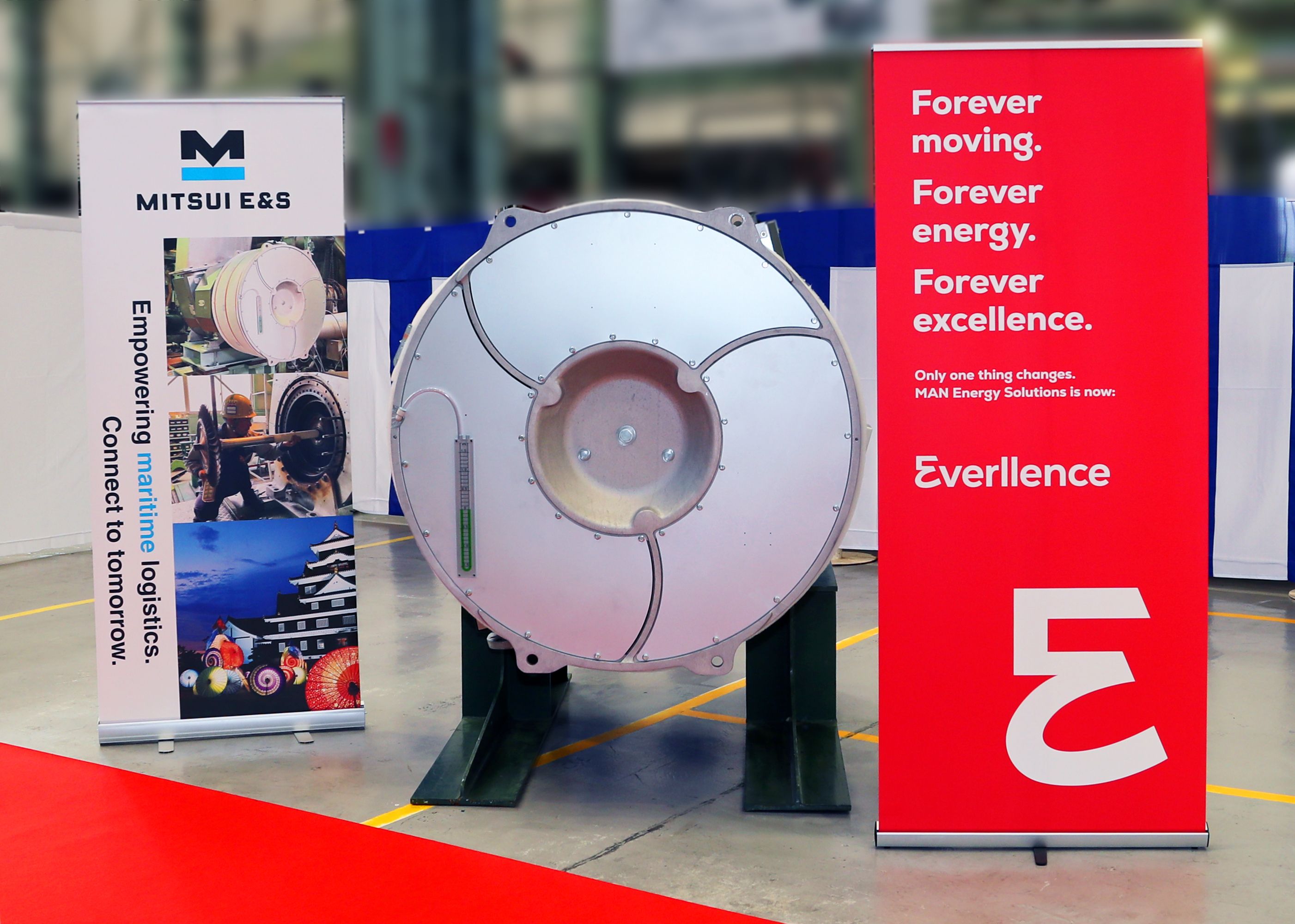Publication
Article
Turbomachinery Magazine
Turbomachinery Expo 2021
Author(s):
Carving a future for gas turbines in the face of decarbonization, hydrogen, and sustainability.

The ASME’s Turbomachinery Expo 2021 normally alternatives between a North America and a European/Asian location. This time it was wholly virtual. The overarching theme was “Sustainable energy –accelerating the transition by advancing turbine technology. ”Keynotes and sessions reflected this, focusing on the ability to adapt turbine technology to carbon-neutral fuels, hybrid power systems, and alternate heat sources. Digital design tools, advanced manufacturing, integrated sensor technology, and machine learning with artificial intelligence AI)were all embraced as part of this transition.
Opening Keynote
The conference kicked off on a bright note. Dr. Michael Webber, Chief Science & Technology Officer at Engie & Professor in Energy Resources, Mechanical Engineering at The University of Texas at Austin, surprised what is a largely academic audience by urging people to “just built stuff.”
He used the example of the development of the steam engine to make his point. Machines were developed over many decades including the famous engine design of Scotsman James Watt. The innovators and builders of equipment forged ahead, refining the design, and adding features. The science behind why it worked better that way followed far behind. It was the application that drove the science and not the other way around.
“Keep in mind that they built the original steam engines then figured out the science as to why they work,” said Webber. “Don’t just focus on the science; let’s keep building things.”
His talk outlined the history of energy production as a steady improvement in efficiency. This, he said, was a mega-trend. The first steam engines were reciprocating. Their back and forth motion proved to be less efficient that the continuous motion of turbomachinery.
“Rotating machines with continuous motion are better overall,” said Webber. Turbomachinery is part of the grand arc of humanity and can play a key role in a decarbonized future.”
He emphasized that change happens gradually, but even small improvements in turbine efficiency add up. A 1% gain in gas turbine efficiency within the existing fleet provides power for another 2.5 million homes.
Power density is another big plus for gas-fired power, Webber added. And the grid needs the rotational inertia of turbomachinery to firm up the system.
“You don’t get rotational inertia from wind and solar, so turbines add real value when kept on the grid,” he said.
Looking ahead, he believes turbines need to get smaller, lighter, and operate at higher temperatures and with a wider range of fuels. That means light-weight materials and the use of 3D printing to achieve better blade cooling.
Engie, he said, continues to operate a lot of gas turbines in its network. It is working on hydrogen blends, biomethane and ammonia.
“There are a lot of naysayers that say turbomachinery has no place in the future,” said Webber. “They are probably wrong. If we create an energy future without turbines, we are going to miss their many benefits.”
Future Fuels Panel
A panel at the show delved into high-purity hydrogen, hydrogen and natural gas blends, ammonia, synthetic carbon-neutral natural gas, and biofuels. But what impact will these fuels have on gas turbine performance, components, ancillary equipment, and the fundamental mechanism effecting performance of these machines for stationary power and flight applications?
Geert Laagland, Head of Engineering at electricity and district heat utility Vattenfall, said his company has wind, biomass, hydrogen, gas, coal, wind, and solar in its portfolio. His take on the future of the market is that hydrogen will certainly be needed in quantity for carbon-neutral dispatchable power, as well as district heat.
“But we still need gas-fired plants to ensure reliable power,” said Laagland.
He considers biomethane and biomass to lack viability as alternatives to natural gas. Nuclear power has poor public support. Fuel cells are expensive and too small scale. As for carbon capture, storage, and utilization (CCUS), he said high upfront costs means it is only going to be viable if a plant is going to run a lot of hours.
“Hydrogen and gas-fired plants are best, and over time we can transition to more hydrogen,” said Laagland. “This is a flexible approach and one that can be realized technically.”
His company has a facility in the Netherlands that is hydrogen-ready. The challenge is where the hydrogen is going to come from. The current idea is that it will be produced by wind farms and transport to where it is needed. But that requires major investment and regulatory support, as well as incentives and the establishment of the right legal framework.
This means that the green hydrogen concept (hydrogen produced by electrolysis using wind and solar power) has a tough roadmap toward viability. Laagland doesn’t believe the infrastructure will be in place in Europe until at least 2030.
“Green hydrogen development will happen slowly,” said Laagland. “Blue hydrogen produced from natural gas will be important in the transition.”
OEMs Going Green
The major gas turbine OEMs have been quick to proclaim their green credentials of late. Mitsubishi Power, in particular, has made several acquisitions and internal product development moves to widen its green portfolio.
Brian Allen, Vice President, Product Line Management, Mitsubishi Power Americas, told conference attendees about the company’s path to decarbonized gas turbine operations operating on hydrogen and ammonia gas.
The Mitsubishi J-series turbine, for example, needed some combustion component modifications to be able to run on hydrogen. Its diffusion combustor and multi-cluster DLN combustor can both operate with 100% hydrogen while its Pro-Mix DLN combustor can currently manage 30%.
Where there is a lack of excess renewable energy for the producing of green hydrogen, he thought ammonia could fill the gap. The company’s H25 gas turbine is one that can serve this market.
“Challenges remain such as avoiding and detecting flashback and maintaining low emissions at low loads,” said Allen. “The operational profile of gas-fired power plants will change due to rapid ramping and the changing of blends.”
Solar Turbines, meanwhile, has turbines with DLE combustion systems that can operate with at least 20% hydrogen and has a roadmap to 100%. His company is meeting the challenges of hydrogen turbomachinery via advanced manufacturing (AM) and by redesigning a new high-hydrogen DLE combustion system. Mason emphasized how natural gas turbines have already enabled a dramatic transition from coal that brought about a steady decline in CO2 while providing stable base load and allowing a greater penetration of renewables onto the grid.
“This is a career-defining decade for our engineers to enable gas turbines to remain relevant in the power industry,” said John Mason, Director of Technology and New Product Development for Turbomachinery Products at Solar Turbines. “The emerging hydrogen economy will also open up energy storage and transportation opportunities in existing natural gas pipelines.”
The aviation industry, too, were well represented at the conference. That sector is committed to a 50% reduction of its carbon footprint relative to 2005 levels. Currently, aviation contributes about 2% of global CO2 emissions. But that could rise to 18% if unmitigated
Sean Bradshaw, Fellow, Sustainable Propulsion, Pratt & Whitney, said his company is working to raise fleet efficiency by switching to biofuels and other fuels that may be needed. He stressed that this must be done economically.
And it’s not just about new engines. Improvements can be made to existing machines. The Turbofan engine, for example, brought about a 16% fuel savings, a 75% reduction I noise, and a 50% reduction in regulated emissions compared to older engines.
“Fully electric engines have been proposed, but hybrid engines comprised of turbines and electric motors looks more promising.", said Bradshaw.
Future Workforce
Another panel at the show turned its attention to creating the workforce of the future. The next generation of engineers will probably need to be able to work at the intersection of turbine technology, integrated renewables, zero carbon fuels, electric propulsion systems, and cybersecurity systems.
Barbara Esker, Deputy Director, Advanced Air Vehicles Program. NASA Aeronautics Research Mission Directorate (ARMD)said technologies like automation, machine learning, AI, and other IT innovations will play an important role in engineering going forward. But they must be balanced by competence in traditional disciplines such as solid/fluid mechanics, thermodynamics, heat transfer and equipment controls.
“The new workforce needs to have strong familiarity with computer science, AI, as well as engineering, physics, and the material sciences,” said Esker. “They have to understand the value of these other technical disciplines since future systems are becoming more integrated.”
She also stressed that engineers must become more conversant with soft skills such as teamwork, the value of multi-disciplinary cooperation, economics, business and finance, market forces, and politics.
“These added factors bring context to engineering work to help the person synthesize the big picture,” said Esker. “People should also be able to grasp emotional intelligence, self-awareness, empathy, and communication skills such as being able to really listen to others.”
Mark Jefferies, Chief of University Research Liaison, at Rolls-Royce Group, said children today are very computer savvy, a far cry from the days of his youth. When he started in industry, the office had one green-screen computer. He believes the future will not involve a complete return to the classroom. For a year, that traditional model has been turned on its head. Hybrid class/online learning for technical disciplines is likely to be the pattern that emerges.
“Employers are changing their thinking on what they want from their future workforce,” said Jefferies. “They will always need technical skills, but they are demanding a more flexible and agile work force that can work creatively in teams. This raises the value of diversity of experience, thought, and continuous learning.”
He added that the technical world has perhaps placed too much emphasis on academic grades rather than the ability to do. The new wave of enrollees and graduates have grown up with laptops and tablets. This is a far cry from earlier generations that grew up building computers, tinkering with car engines, or fixing farm equipment.
“New workers often lack the skills to repair mechanical equipment,” said Jefferies. “We need more practical experience going ahead and apprenticeship programs could be the best way to provide that. New students have to understand that not everything can be learned on YouTube videos.”
Brian Monreale, Associate Lab Director at NETL’s Research and Innovation Center, said the computational sciences using high performance computing and analytics will play a key role in driving forward innovation.
“Computing, data science, AI, and machine learning have changed our lives,” he said. “They can move the energy ecosystem beyond the current average of 35% energy efficiency. Computing will play critical role in helping managers and engineers make informed decisions about efficiency, as well as bringing about more synergy between supply and demand.”
He suggested that students be encouraged to spend one semester at college and the next working in a related industry as the best way to marry academic learning with practical experience.
The next Turbo Expo is scheduled to take place in Amsterdam, Netherlands in June of 2022.
Newsletter
Power your knowledge with the latest in turbine technology, engineering advances, and energy solutions—subscribe to Turbomachinery International today.






